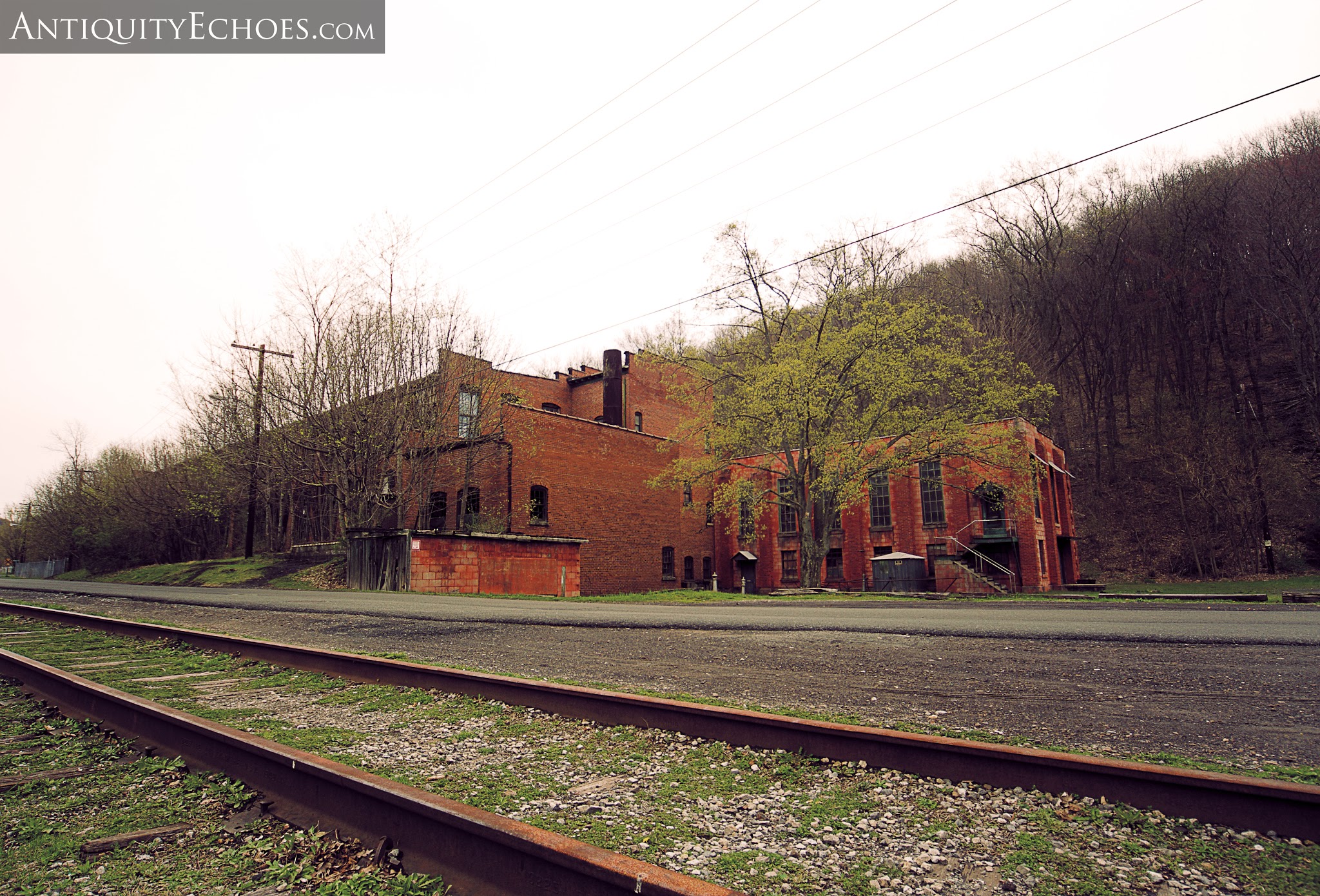The Last Silk Mill - Lonaconing
It's not often we come
across a property that has a real chance of being saved. More often
than not our work seems to serve as a final farewell to a place
who's job is finished and time has passed. This silk mill is
different - Our motivation is not to pay homage to a place which will
soon be nothing but a memory, our aim here is to spread public
awareness about a place that needs the help of as many people as
possible, as soon as possible. At the end of this write-up you will
find contact information, please help out if you can.
 The concept for the Lonaconing silk
mill was birthed in the early 1900's when a local banker by the name
of Mr. Duncan Sloan overheard that the Klotz Throwing Company was
looking for a suitable site for their new plant. Mr. Sloan approached
the Klotz Company and offered his hometown of Lonaconing as a
location for them to consider setting up shop. He cited the low cost
of fuel and surplus labor force in the area as key points for
consideration. The coal industry that drove the region had a very
high layoff rate, and the mill would supplement wages and provide a
more steady employment opportunity. Lonaconing was also easily
accessible via railway, an important thing to consider when setting
up industry in the early 1900's.
The concept for the Lonaconing silk
mill was birthed in the early 1900's when a local banker by the name
of Mr. Duncan Sloan overheard that the Klotz Throwing Company was
looking for a suitable site for their new plant. Mr. Sloan approached
the Klotz Company and offered his hometown of Lonaconing as a
location for them to consider setting up shop. He cited the low cost
of fuel and surplus labor force in the area as key points for
consideration. The coal industry that drove the region had a very
high layoff rate, and the mill would supplement wages and provide a
more steady employment opportunity. Lonaconing was also easily
accessible via railway, an important thing to consider when setting
up industry in the early 1900's.
Within several short weeks a town
meeting was held at the Evans Opera House in Lonaconing. The Klotz
Throwing Company proposed construction of their new silk mill within
the town, and the townspeople agreed to the plans. Ground broke for
the new mill, August 13, 1905, and by the 1920's the mill employed
over 300 people. Unfortunately, by the 1940's and 50's it became
apparent that the old machines and relatively small mill proved no
match for the much larger and modern facilities it was now competing
with, and in 1957 the mill was forced to close. Burt Rowan, who
worked at the silk mill during the 1940's had this to say about the
silk mills role in the small town of Lonaconing, “It kept the bread
and butter on a lot of people’s tables because of the coal mine
strikes and other problems... it really helped.”
The mill sat unused, but secure until
the 1970's, when it was privately purchased by a local resident who
envisioned saving the old place for future generations. Today he is
on his mid-seventies and still holds out hope for the slowing
decaying mill. We have read several first-hand accounts of the mill,
comparing it to a time capsule... but standing there, watching water
flowing in though blackened ceiling boards, it looked more a tomb.
The mill is dying, and without a new roof, there will be no hope of
preservation. The elderly owner still comes to the mill regularly,
taking time away from his wife who is suffering from Alzheimer's
disease , to empty buckets of rain water out the third floor window.
Being the last intact silk mill in the United States, it was placed
on the Endangered Maryland list in 2007, but sadly no real assistance
has followed. Some plastic tarping has been added as a temporary and
partial solution, but without a new roof, all may finally be lost to
history.
Here is a link which will bring you to
the contact information for those serving in governmental positions
in the town of Lonaconing. If you can, please reach out and see what
can be done to help the old mill.
You can also contact the owner directly - Herb Crawford - (301) 268-1168.

It was an eerie kind of silence to be found within the old mill, where once the whir of machinery was so common.
Funny how such mundane every-day items can seem so poignant.
Stacks and stacks of spindle crates.
Cubby holes where employees would store away personal belongings before their shift began.
Inside the state of the roof is apparent.

This is an older video of ours. When watching, you may notice that it has a different "feel" to it than our current-day films. This is because the style of our cinematography has progressed over time, and our equipment has changed and improved throughout the years. We have chosen to leave our older videos available for viewing online to illustrate the evolution of our work.





























